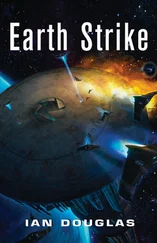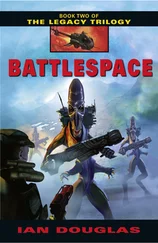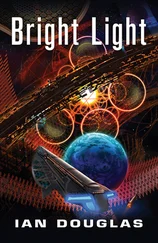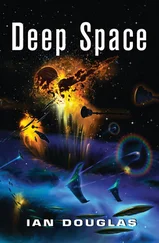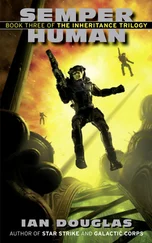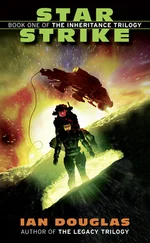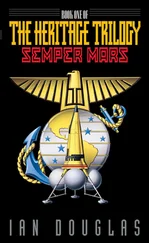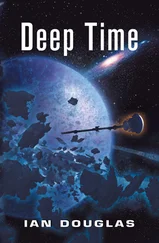Which meant that a K-III civilization would use all of the energy available within an entire galaxy.
When Gray suggested the possibility of a galactic-scale Dyson sphere—and as they accepted the AI’s data—he felt an uneasy stir move through his audience.
Why , the Groth Hoj asked him, should we fear this? This … event lies nearly a billion years in our future. And it could well be our own remote descendents who do this …
The ephemeral is correct , the Adjugredudhran said. Its branching arms gestured sharply. A mere four galactic rotations is a brief space of time for a truly mature civilization.
The being’s use of the word ephemeral almost jolted Gray out of the simulation. How long did the Adjugredudhra live?
And that question raised another. Presumably, they possessed long life spans—possibly even functional immortality—because they’d learned how to manipulate their own genome. But genetics was one of the proscribed technologies—the “G” in “GRIN,” knowledge that could lead to the Tech Singularity. Supposedly, the Adjugredudhra, like the rest of the Sh’daar, were doing everything in their power to avoid another one.
Were all of the members of the Sh’daar Collective hypocrites on such an astronomical scale?
That thought disturbed him even as he answered their question. “Eight hundred seventy-six million years is more like three galactic rotations, not four,” Gray said. “A mere instant!” He meant the statement as a joke, but sensed a kind of impact, an increasing sense of unease, among the alien listeners. Maybe they did casually think on a scale of hundreds of millions of years. “And in my time, my epoch, we might be seeing the first arrival of the galactic Dyson sphere makers. We believe them to be the Rosette Aliens.”
At Gray’s mental signal, Konstantin-2 loaded another set of images into the collective, virtual consciousness—images originally returned to Earth from the heart of the Omega Centauri star cluster. “A lot of ephemeral lives were lost,” he said, “getting this information.”
Konstantin was showing the gathered beings images collected by America , and by various survey ships and probes sent into the cluster’s heart. The six black holes the Council were seeing—cosmologists were now certain—were the far-future embers of the Six Suns of the remote past.
The beings gathered about the virtual circle stared up, with wildly different sensory organs, into utter strangeness. Not all of them had eyes … but the imagery had been made available in a wide range of formats.
The Six Suns all were hot, young stars, each some forty times the mass of Earth’s sun. Such large stars were profligate and short-lived. They burned through their stores of nuclear fuel in just tens of millions of years before ending their relatively brief lives as Type II supernovae and collapsing into black holes. The various star-faring beings around him had to know what these images implied, but he said it aloud anyway.
“This is the ultimate fate of your Six Suns,” Gray told them. “Six black holes spinning in a rosette. Those masses, rotating that quickly, distort spacetime in the same way as the TRGAs … what you call the Spinning Gateways.”
Gray knew, though, that the most intriguing part of the images humans had recorded weren’t the black holes themselves, but what was within the central opening at the Rosette’s heart: starscapes.
Different starscapes.
They changed with the changing angle of the recording sensors as they passed the opening, and Gray thought about how a slight change in the angle of approach through a TRGA cylinder could change your destination in both time and space. Here, one view of a sparseness of stars—a stellar desert—gave way to the teeming myriads of suns at the heart of a cluster or a galaxy, which in turn gave way to tangled, knotted curtains of nebulae … to the emptiness of intergalactic space … to a view of a binary star from relatively close … to a view of a spiral galaxy—quite possibly the Milky Way—seen in all of its spectacular beauty from Outside.
Some of those different views, those different realities , were alien in the extreme. One appeared to be a realm of searing, white-hot energy … the core of a sun, perhaps … or the chaotic incandescence of an instant after the big bang … or even a cosmos of completely different laws and makeup.
Cosmologists studying the changing scenes had concluded that each different starscape was looking into a different universe—alternate, parallel realities, some very like this one, some completely other .
“We believe the Rosette Aliens came through this gateway,” Gray told the assembly. “They might be from the remote future. More likely they’re from an alternative universe, a different reality. Some of our cosmologists have speculated that they’re from a universe that is nearing the end of its lifetime, a universe in the final eons of cold, entropic decay. If so, the Rosette Aliens might be seeking a younger, healthier universe. They would be migrating here to escape their dying cosmos.
“But we don’t know. We haven’t been able to establish communications with them. We don’t know what they are, what they’re thinking, where they’re from. They may be so far advanced that they literally do not, can not notice us.
“Some human xenosophontologists have begun speculating,” Gray went on, “about the galactic Dyson sphere we glimpsed in the far future … eight hundred eighty-eight million years after this epoch you inhabit here. It seems statistically unlikely that we’re dealing with two Kardashev-III species here—one entering my time as the Rosette Aliens, and a different one building a galaxy-sized Dyson sphere just twelve million years later. If these two … manifestations are in fact the same species, we need to confront them before they become well-established and begin cannibalizing the entire galaxy. This is completely beyond the scope and capabilities of Humankind. But if it is of interest to the Sh’daar, perhaps an alliance between humans and the Sh’daar is a possibility after all.”
Gray hated saying that, hated the necessity of stating it. He’d spent most of his adult life fighting the Sh’daar. He’d started off as a fighter pilot off the America , then gone on to flying a console at Navy HQ Command. He’d served as CAG on board the Republic , as skipper of the Nassau and then as XO back on board the America once more, before eventually moving up to becoming America ’s CO.
And now he was a fleet admiral in command of the America battlegroup, with orders from the president himself to forge an alliance with the federation of alien cultures he’d been fighting now for twenty … no, twenty- four years.
No … he didn’t like that one damned bit.
Hell, the whole point of the war had been to maintain Earth’s sovereignty against a coalition of beings determined to incorporate Humankind into their own order. But now here he was, with orders from President Koenig to explore the possibility of recruiting those same beings into an alliance with Earth. Could the Sh’daar be trusted? Could they even be understood?
Were humans going to lose their independence after all, after nearly sixty years of bitter and bloody conflict?
It tore at him, knowing so many of his soldiers—so many of his friends —had died because of these beings, and now he was essentially here, begging for their help.
He’d stopped speaking, his message delivered, and he realized that all of the gathered aliens were discussing it now with considerable animation. Gray found that he was unable to follow more than a fraction of what was being said. It was like being in a conversation where everyone was talking at once, and hearing only a word here and there.
Читать дальше


